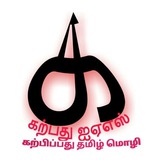What ails Indian navigation constellation?
#KarpathuIAS
Karpathuias.blogspot.in
👉 Note4Students:
The prime objective of ISRO is to develop space technology and its application to various national tasks.
🔘 NavIC was one such attempt to make India self reliant in GPS systems as during kargil war USA had denied access to its GPS system to India which led to development of NavIC.
Important news card as it contains major details regarding NavIC.
From UPSC perspective, following things are important:
🔘 Prelims level:
NavIC, GPS, Rubidium and cesium clocks. (Also look at properties of these elements, position in periodic table etc.)
🔘 Mains level:
NavIC and various other missions of ISRO. (There was a question in Mains 2016 on this topic)
🔴 News:
The clocks on the first satellite, IRNSS-1A had failed in June 2016, affecting the accuracy of the “GPS”.
ISRO is trying to rectify this problem.
🔴 What is NavIC?
🔘 Navigation Indian Constellation (NavIC) is an independent Indian satellite-based positioning system for critical national applications.
🔘 NavIC consists of a constellation of seven satellites, three of which are in a geostationary orbit and four in a geosynchronous.
🔘 Its purpose is to provide ‘reliable position, navigation and timing services over India and neighbourhood’.
🔴 According to ISRO, the applications of IRNSS are:
🔘 terrestrial, aerial and marine navigation, vehicle tracking and fleet management, terrestrial navigation for hikers and travellers, disaster management, integration with mobile phones, mapping and geodetic data capture and visual and voice navigation for drivers.
🔴 What’s the problem?
🔘 NavIC relies on rubidium clocks as navigation requires the most accurate clocks.
🔘 This January, the ISRO confirmed that the clocks on the first satellite, IRNSS-1A had failed in June 2016.
🔘 Though six of the satellites are working fine, the one faulty one means the “GPS” isn’t working as accurately as it ought to be.
🔴 How’s it being fixed?
🔘 ISRO was trying to revive the clocks on 1A.
🔘 It is also readying one of the two back-up navigation satellites to replace it in space in the second half of this year.
🔴 Future prospects:
🔘 Rubidium clocks were the previous standard in accurate clocks and most organisations, that need precise time estimates, need cesium clocks.
🔘 Future clocks on such satellites, each with a lifespan of 10 years, will host such clocks.
@UPSC_2018
#Prelims #Main #GS3 #Science #Space #ISRO
#KarpathuIAS
Karpathuias.blogspot.in
👉 Note4Students:
The prime objective of ISRO is to develop space technology and its application to various national tasks.
🔘 NavIC was one such attempt to make India self reliant in GPS systems as during kargil war USA had denied access to its GPS system to India which led to development of NavIC.
Important news card as it contains major details regarding NavIC.
From UPSC perspective, following things are important:
🔘 Prelims level:
NavIC, GPS, Rubidium and cesium clocks. (Also look at properties of these elements, position in periodic table etc.)
🔘 Mains level:
NavIC and various other missions of ISRO. (There was a question in Mains 2016 on this topic)
🔴 News:
The clocks on the first satellite, IRNSS-1A had failed in June 2016, affecting the accuracy of the “GPS”.
ISRO is trying to rectify this problem.
🔴 What is NavIC?
🔘 Navigation Indian Constellation (NavIC) is an independent Indian satellite-based positioning system for critical national applications.
🔘 NavIC consists of a constellation of seven satellites, three of which are in a geostationary orbit and four in a geosynchronous.
🔘 Its purpose is to provide ‘reliable position, navigation and timing services over India and neighbourhood’.
🔴 According to ISRO, the applications of IRNSS are:
🔘 terrestrial, aerial and marine navigation, vehicle tracking and fleet management, terrestrial navigation for hikers and travellers, disaster management, integration with mobile phones, mapping and geodetic data capture and visual and voice navigation for drivers.
🔴 What’s the problem?
🔘 NavIC relies on rubidium clocks as navigation requires the most accurate clocks.
🔘 This January, the ISRO confirmed that the clocks on the first satellite, IRNSS-1A had failed in June 2016.
🔘 Though six of the satellites are working fine, the one faulty one means the “GPS” isn’t working as accurately as it ought to be.
🔴 How’s it being fixed?
🔘 ISRO was trying to revive the clocks on 1A.
🔘 It is also readying one of the two back-up navigation satellites to replace it in space in the second half of this year.
🔴 Future prospects:
🔘 Rubidium clocks were the previous standard in accurate clocks and most organisations, that need precise time estimates, need cesium clocks.
🔘 Future clocks on such satellites, each with a lifespan of 10 years, will host such clocks.
@UPSC_2018
#Prelims #Main #GS3 #Science #Space #ISRO
